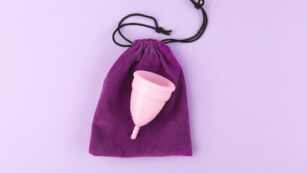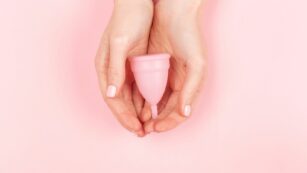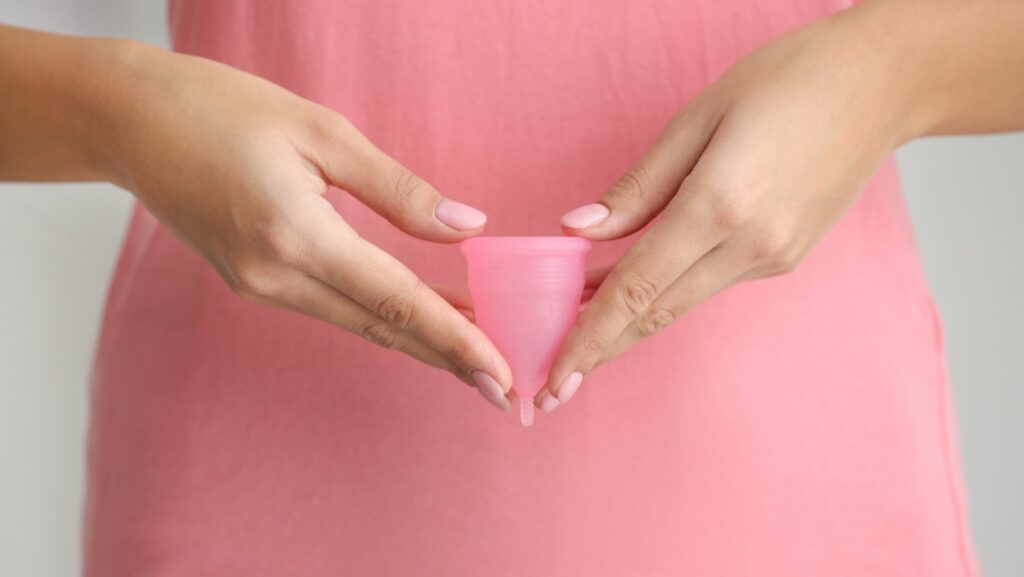Switching to a menstrual cup can be a game-changer for many. Not only is it eco-friendly, but it also offers comfort and convenience that traditional menstrual products often lack. However, like any new experience, getting the hang of using a menstrual cup can take a bit of practice and patience. For those new to menstrual cups or even seasoned users looking for a smoother experience, a few tried-and-true tips can make all the difference. From proper insertion techniques to cleaning hacks, these insights can help ensure a hassle-free period. Dive in to discover how to make the most of your menstrual cup journey. Sizes typically range from small to large, depending on factors like age, flow, and childbirth experience. For instance, women under 30 who’ve never given birth might opt for smaller sizes, while those over 30 or who’ve given birth might choose larger sizes
Menstrual Cup Tips
 Switching to a menstrual cup offers many benefits, from eco-friendliness to greater comfort. Here are some crucial tips to ensure a smooth transition for both beginners and experienced users. Choosing the right material and size is crucial. Menstrual cups come in medical-grade silicone, latex, and TPE (thermoplastic elastomer). Most users prefer medical-grade silicone due to its durability and hypoallergenic properties. Sizes typically range from small to large, depending on factors like age, flow, and childbirth experience. For instance, women under 30 who’ve never given birth might opt for smaller sizes, while those over 30 or who’ve given birth might choose larger sizes. Firmness affects how a menstrual cup opens inside the body. A firmer cup pops open easily but may cause discomfort for those with sensitive bladders. Flexible cups are more comfortable but might be harder to open. It’s essential to consider personal comfort and menstrual flow. For heavy flow, a firm, large cup may be ideal. Conversely, individuals with light flow or sensitive anatomy might prefer a softer, smaller cup. Understanding these factors ensures a more comfortable and effective menstrual cup experience.
Switching to a menstrual cup offers many benefits, from eco-friendliness to greater comfort. Here are some crucial tips to ensure a smooth transition for both beginners and experienced users. Choosing the right material and size is crucial. Menstrual cups come in medical-grade silicone, latex, and TPE (thermoplastic elastomer). Most users prefer medical-grade silicone due to its durability and hypoallergenic properties. Sizes typically range from small to large, depending on factors like age, flow, and childbirth experience. For instance, women under 30 who’ve never given birth might opt for smaller sizes, while those over 30 or who’ve given birth might choose larger sizes. Firmness affects how a menstrual cup opens inside the body. A firmer cup pops open easily but may cause discomfort for those with sensitive bladders. Flexible cups are more comfortable but might be harder to open. It’s essential to consider personal comfort and menstrual flow. For heavy flow, a firm, large cup may be ideal. Conversely, individuals with light flow or sensitive anatomy might prefer a softer, smaller cup. Understanding these factors ensures a more comfortable and effective menstrual cup experience.
Cleaning and Maintenance
Proper cleaning and maintenance are crucial for ensuring the longevity and hygiene of a menstrual cup. Follow these guidelines for an effective cleaning routine and storage method. During menstruation, clean the menstrual cup at least twice daily. Use mild, unscented soap and warm water to rinse the cup. Avoid using harsh chemicals or strong fragrances, as these can irritate sensitive areas and degrade the cup material. Inspect the air holes at the top of the cup and make sure they’re free of residue; you can clear them using a toothpick or a pin if needed. After washing, dry the cup thoroughly before reinsertion. Store the menstrual cup in a breathable container or pouch. Avoid airtight containers, as they can promote bacterial growth. Choose a cotton or mesh bag for storage to keep the cup dry and free from dust. Before storing, ensure the cup is completely dry to prevent any mold or mildew development. Keep it in a cool, dry place away from direct sunlight to maintain its material integrity.
effective cleaning routine and storage method. During menstruation, clean the menstrual cup at least twice daily. Use mild, unscented soap and warm water to rinse the cup. Avoid using harsh chemicals or strong fragrances, as these can irritate sensitive areas and degrade the cup material. Inspect the air holes at the top of the cup and make sure they’re free of residue; you can clear them using a toothpick or a pin if needed. After washing, dry the cup thoroughly before reinsertion. Store the menstrual cup in a breathable container or pouch. Avoid airtight containers, as they can promote bacterial growth. Choose a cotton or mesh bag for storage to keep the cup dry and free from dust. Before storing, ensure the cup is completely dry to prevent any mold or mildew development. Keep it in a cool, dry place away from direct sunlight to maintain its material integrity.
Managing Leaks and Discomfort
 Switching to a menstrual cup can be a game-changer but it might come with some initial challenges. It’s essential to remember that minor leaks and discomfort are often part of the learning curve. To manage leaks, ensure the cup is fully opened after insertion by running a finger around its base. If leaks persist, consider trying a different fold or repositioning the cup. For discomfort, checking the cup’s size and firmness is crucial. Sometimes, trimming the stem can also help. Patience and practice are key; with time, most users find the menstrual cup to be a reliable and comfortable option. By following the tips shared, anyone can master the use of a menstrual cup and enjoy its numerous benefits. Choosing the right material and size is crucial. Menstrual cups come in medical-grade silicone, latex, and TPE (thermoplastic elastomer). Most users prefer medical-grade silicone due to its durability and hypoallergenic properties.
Switching to a menstrual cup can be a game-changer but it might come with some initial challenges. It’s essential to remember that minor leaks and discomfort are often part of the learning curve. To manage leaks, ensure the cup is fully opened after insertion by running a finger around its base. If leaks persist, consider trying a different fold or repositioning the cup. For discomfort, checking the cup’s size and firmness is crucial. Sometimes, trimming the stem can also help. Patience and practice are key; with time, most users find the menstrual cup to be a reliable and comfortable option. By following the tips shared, anyone can master the use of a menstrual cup and enjoy its numerous benefits. Choosing the right material and size is crucial. Menstrual cups come in medical-grade silicone, latex, and TPE (thermoplastic elastomer). Most users prefer medical-grade silicone due to its durability and hypoallergenic properties.

